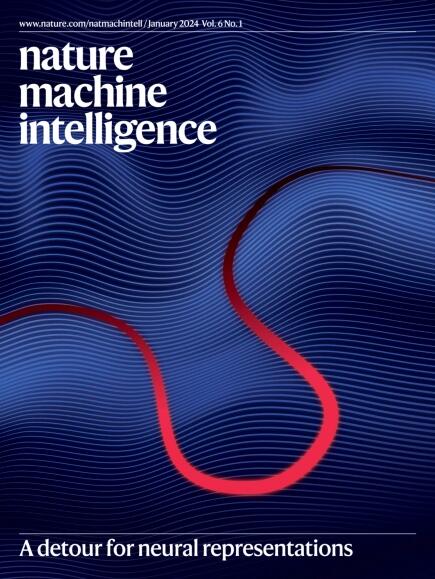A framework to evaluate machine learning crystal stability predictions
IF 23.9
1区 计算机科学
Q1 COMPUTER SCIENCE, ARTIFICIAL INTELLIGENCE
引用次数: 0
Abstract
The rapid adoption of machine learning in various scientific domains calls for the development of best practices and community agreed-upon benchmarking tasks and metrics. We present Matbench Discovery as an example evaluation framework for machine learning energy models, here applied as pre-filters to first-principles computed data in a high-throughput search for stable inorganic crystals. We address the disconnect between (1) thermodynamic stability and formation energy and (2) retrospective and prospective benchmarking for materials discovery. Alongside this paper, we publish a Python package to aid with future model submissions and a growing online leaderboard with adaptive user-defined weighting of various performance metrics allowing researchers to prioritize the metrics they value most. To answer the question of which machine learning methodology performs best at materials discovery, our initial release includes random forests, graph neural networks, one-shot predictors, iterative Bayesian optimizers and universal interatomic potentials. We highlight a misalignment between commonly used regression metrics and more task-relevant classification metrics for materials discovery. Accurate regressors are susceptible to unexpectedly high false-positive rates if those accurate predictions lie close to the decision boundary at 0 eV per atom above the convex hull. The benchmark results demonstrate that universal interatomic potentials have advanced sufficiently to effectively and cheaply pre-screen thermodynamic stable hypothetical materials in future expansions of high-throughput materials databases. Riebesell et al. introduce Matbench Discovery, a framework to compare machine learning models used to identify stable crystals. Out of several architectures, they find that universal interatomic potentials perform best in the competition.


一个评估机器学习晶体稳定性预测的框架
机器学习在各个科学领域的快速应用需要开发最佳实践和社区一致同意的基准任务和指标。我们将Matbench Discovery作为机器学习能量模型的示例评估框架,在这里作为预过滤器应用于高通量搜索稳定无机晶体的第一性原理计算数据。我们解决了(1)热力学稳定性和地层能量(2)材料发现的回顾性和前瞻性基准之间的脱节。除了这篇论文,我们还发布了一个Python包来帮助未来的模型提交,以及一个不断增长的在线排行榜,该排行榜具有自适应的用户定义的各种性能指标权重,允许研究人员优先考虑他们最重视的指标。为了回答哪种机器学习方法在材料发现方面表现最好的问题,我们最初发布的版本包括随机森林、图神经网络、一次性预测器、迭代贝叶斯优化器和通用原子间势。我们强调了常用的回归指标和更多任务相关的材料发现分类指标之间的不一致。如果准确的预测接近凸壳上每原子0 eV的决策边界,则准确的回归量容易受到意外的高假阳性率的影响。基准结果表明,普遍的原子间势已经足够先进,可以在未来高通量材料数据库的扩展中有效和廉价地预筛选热力学稳定的假设材料。
本文章由计算机程序翻译,如有差异,请以英文原文为准。
求助全文
约1分钟内获得全文
求助全文
来源期刊

Nature Machine Intelligence
Multiple-
CiteScore
36.90
自引率
2.10%
发文量
127
期刊介绍:
Nature Machine Intelligence is a distinguished publication that presents original research and reviews on various topics in machine learning, robotics, and AI. Our focus extends beyond these fields, exploring their profound impact on other scientific disciplines, as well as societal and industrial aspects. We recognize limitless possibilities wherein machine intelligence can augment human capabilities and knowledge in domains like scientific exploration, healthcare, medical diagnostics, and the creation of safe and sustainable cities, transportation, and agriculture. Simultaneously, we acknowledge the emergence of ethical, social, and legal concerns due to the rapid pace of advancements.
To foster interdisciplinary discussions on these far-reaching implications, Nature Machine Intelligence serves as a platform for dialogue facilitated through Comments, News Features, News & Views articles, and Correspondence. Our goal is to encourage a comprehensive examination of these subjects.
Similar to all Nature-branded journals, Nature Machine Intelligence operates under the guidance of a team of skilled editors. We adhere to a fair and rigorous peer-review process, ensuring high standards of copy-editing and production, swift publication, and editorial independence.
 求助内容:
求助内容: 应助结果提醒方式:
应助结果提醒方式:


